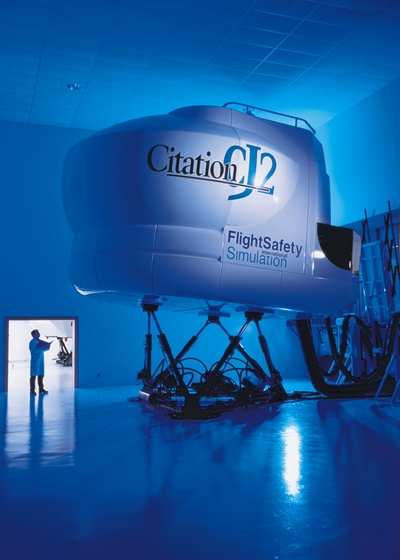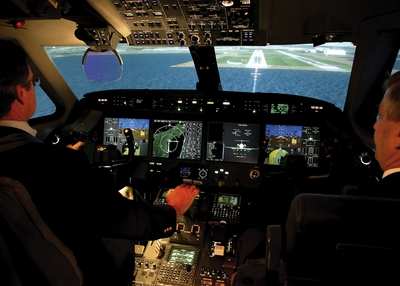Less Actual Flight Time Needed For Licensing
 Pilots must have a
minimum amount of flight experience before they are allowed to fly
a commercial aircraft. In the US a pilot must have 250 hours flight
experience of which 50 may be obtained using an approved simulator
while supervised by an instructor.
Pilots must have a
minimum amount of flight experience before they are allowed to fly
a commercial aircraft. In the US a pilot must have 250 hours flight
experience of which 50 may be obtained using an approved simulator
while supervised by an instructor.
According to the Washington Post, new ICAO rules allow pilots to
receive a commercial license with only 70 hours of actual flight
experience after obtaining 170 hours of simulator training.
The new rules are a response to appeals from countries facing
critical pilot shortages and no infrastructure to train new ones.
In the past, many foreign countries used flight training facilities
in the US, but recent changes resulting from the attacks of 9/11
increased restrictions on foreign student flight training here.
That's placed many countries in a bind, especially those in areas
experiencing explosive growth in their airline industries like Asia
and the Middle East.
The new rules are raising eyebrows among traditionalist here in
the US. "In a simulator, you have pride at stake," said Dennis
Dolan, president of the International Federation of Air Line Pilots
Association. "In a real airplane, you have your life at stake."
Still, many US airlines train first officers exclusively with
simulators. The state-of-the-art for simulators is truly
astonishing of late. Full-motion simulators with full-daylight
display capabilities duplicate the actual aircraft with startling
clarity and fidelity.
Proponents of the new rules say airlines will benefit because
prospective new hires can learn things as the airlines would
like.

Pilots in the US gaining the necessary experience to become
competitive in the airline hiring market often fly many hours as a
flight instructor in single-engine aircraft. Piloting an airliner
as part of a flightcrew is a very different kind of flying.
Airlines have many rules and procedural requirements above and
beyond the basic regulations set by the FAA.
Additionally, sharing duties with another pilot adds a
completely different twist. Many pilots say they must "unlearn"
habits developed in the hours they spent as the sole pilot in
command.
"Those hours flying in a single-engine piston airplane, they do
us no good at the airlines, and we can't monitor the pilots," said
Christian Schroeder, an official with the International Air
Transport Association. "We are training a better-qualified and
safer pilot this way."
Many US pilot groups are expressing their disdain with the new
rules. They say the "white-knuckle" experience pilots gain flying
the required hours in a real airplane can never be duplicated by a
flight simulator. Additionally, they say replicating a dynamic air
traffic environment complete with air traffic controllers of
differing experience levels is almost impossible.
There is no question flight simulators can contribute to flight
safety. The capability to simulate systems malfunctions and extreme
weather conditions gives the simulator unique training capabilities
not possible in a real airplane. But no one has studied whether a
simulator might safely replace actual flight experience.

Chairman of the department of aeronautical science at Embry
Riddle Aeronautical University Cass Howell says, "There is no
objective proof that this will be just as safe a method of
training. At this point, nobody knows if this is an effective
training method."
Each country may set its own rules regarding minimum experience
for pilots. ICAO sets world-wide minimums and individual countries
may make theirs more restrictive. So far, there is no indication
the US intends to change its rules... yet.
Some experts say if the number of pilots training in the US
continues to drop the FAA may be forced to act.
 ANN's Daily Aero-Linx (04.15.24)
ANN's Daily Aero-Linx (04.15.24) Classic Aero-TV: 'No Other Options' -- The Israeli Air Force's Danny Shapira
Classic Aero-TV: 'No Other Options' -- The Israeli Air Force's Danny Shapira Aero-News: Quote of the Day (04.15.24)
Aero-News: Quote of the Day (04.15.24) Airborne 04.16.24: RV Update, Affordable Flying Expo, Diamond Lil
Airborne 04.16.24: RV Update, Affordable Flying Expo, Diamond Lil ANN's Daily Aero-Term (04.16.24): Chart Supplement US
ANN's Daily Aero-Term (04.16.24): Chart Supplement US





